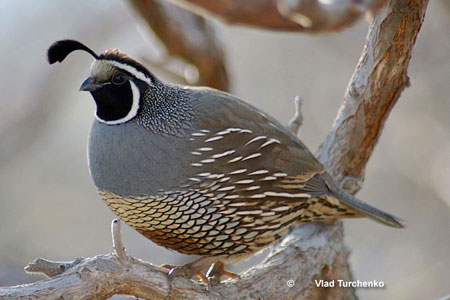The California Quail is a short-necked, plump game bird. They have small bills and heads. Their wings are very broad but short, and their tails are square and relatively long.
Both males and females have a topknot that’s comma-shaped. It consists of feathers that project from the forehead. The topknot is longer on males than on females.
California Quails can be found in patchy, dry, low vegetation. They make a prominent Chi-ca-go call.
These birds have been known to forage calmly close to humans, but if you startle them, they will flush to cover. You can attract these birds to your yard by providing dense shrubbery for cover and sprinkling birdseed or grain on the ground.
On this page
Identification
Adult male California Quails are brown and rich gray. They have black faces that are outlined with strong white stripes. They have a pattern of creamy, chestnut, and white scales on the belly.
California Quails are 9.4 to 10.6 inches (24-27 centimeters) long, weigh 4.9 to 8.1 ounces (140 to 230 grams), and have a wingspan of 12.6 to 14.6 inches (32-37 centimeters).
California Quails are half the size of a Ring-necked Pheasant and about the size of a Northern Bobwhite.
Female California Quails lack facial markings and are mostly brown. Just like the males, they have a pattern of creamy, chestnut, and white scales on the belly.
They’re the same size and length and have the same wingspan as breeding males. They also weigh the same amount.
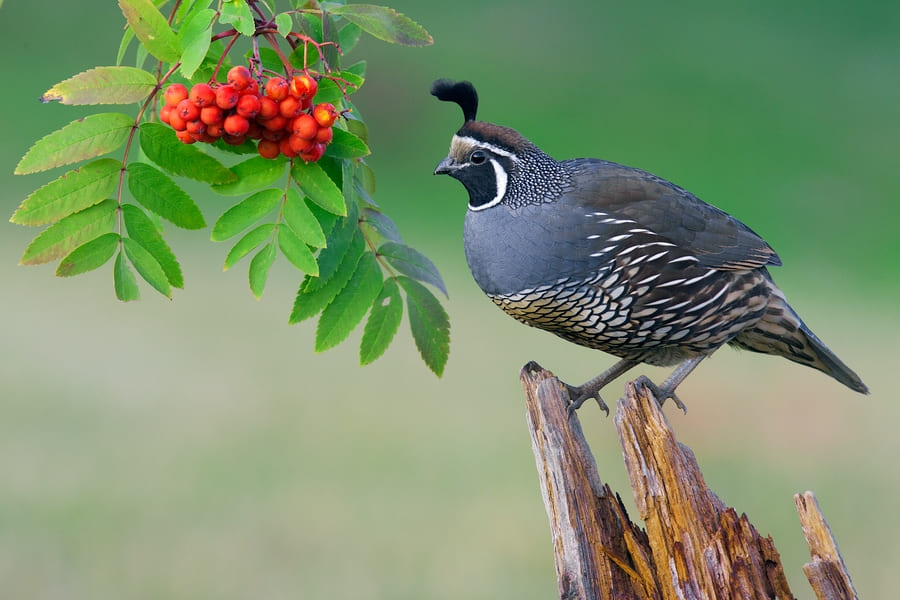
California Quail (Male), Bella Vista Road, Vernon, British Columbia
Food
California Quails are mostly seedeaters. These birds can commonly be seen eating flowers, leaves, catkins, manzanita, grain, acorns, and poison oak berries.
In addition, they’ll consume invertebrates like beetles, caterpillars, mites, snails, and millipedes. They mostly consume invertebrates during their breeding season. To put this into perspective for you, their diet is usually around 70 percent vegetarian.
Additionally, as gross as this may sound, young California Quails will actually consume the feces of adult California Quails. Adult Quails have unique organisms in their digestive tract that young Quails do not have.
When adult birds digest their food, some of these organisms move through the body and exit via feces. The only way for young birds to obtain these organisms is by consuming their parent’s feces. These organisms are needed so the young Quails can properly digest vegetation.
Nesting and Eggs
Female California Quails will create and hide their nests on the ground. These nests are usually among grasses or at the base of trees or shrubs.
However, there have been some cases where female California Quails have placed their nests up to 10 feet off the ground. The nest usually involves a recessed area in the ground that’s lined with grasses and stems that are placed near rocks or vegetation for protection.
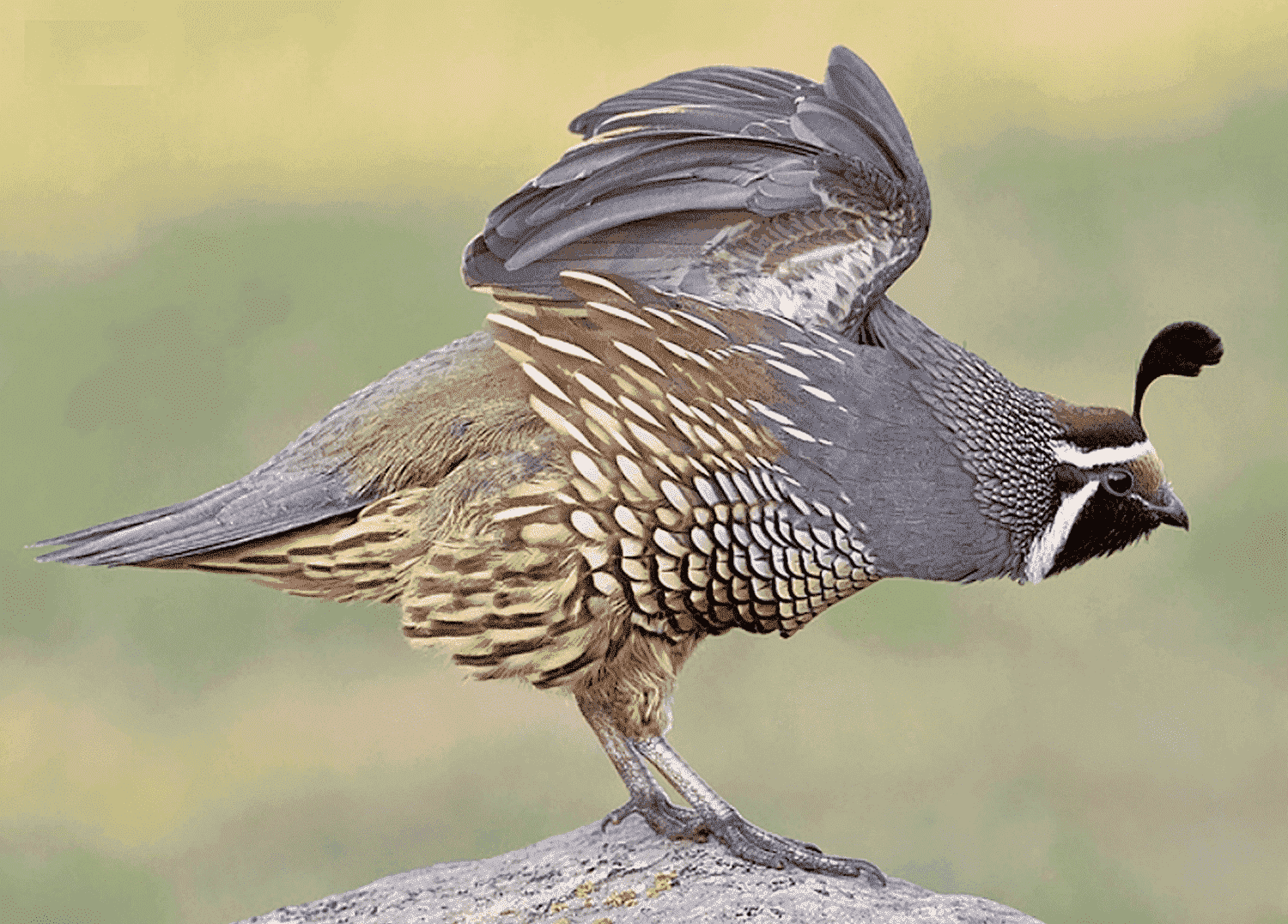
Photograph © Alan Wilson.
California Quail nests can range from 1 to 2 inches deep and 5 to 7 inches wide. The generally have 1-2 broods per breeding season, ranging from 12 to 16 eggs. California Quails incubate their eggs for around 23 days. The young quail leave the nest a day after hatching.
Current Situation
California Quail are birds that prefer to inhabit chaparral, coastal sagebrush, the high desert of California and the northwestern United States, and foothills. These birds love to visit backyards, especially those that have birdseed.
If you’re looking to attract California Quails to your yard, they like food available at ground level. You can either place a ground feeder or sprinkle seed throughout your grass.
California Quail populations have increased by approximately 0.8% every year since the late 1960s and 2019. Their estimated population is 5.8 million.
California Quails are very popular game birds; around 800,000 and 1.2 million of these birds are shot every year in California alone. However, this amount of hunting pressure does not seem to be hurting their populations.
Facts
- The California Quail became California’s state bird in 1932.
- Different California Quail broods will mix together after hatching. By doing this, all the parents of the broods will take care of the young as a group. Adults that raise their young this way have been known to live longer than adults that don’t.
- Some California quails will “egg-dump.” Females will lay their eggs in nests that are not their own. This results in some California Quail nests having up to 28 eggs!
- The California Quail’s topknot, also known as a head plume, looks like it’s a single feather. However, that’s not the case. It’s actually a cluster of six feathers that overlap with one another.
- California Quail are not known for flying, but they will fly short distances when escaping danger or when they need to reach shelter for the night.
Similar Species
The California Quail has features that are similar to other bird species. Here are some similar species:
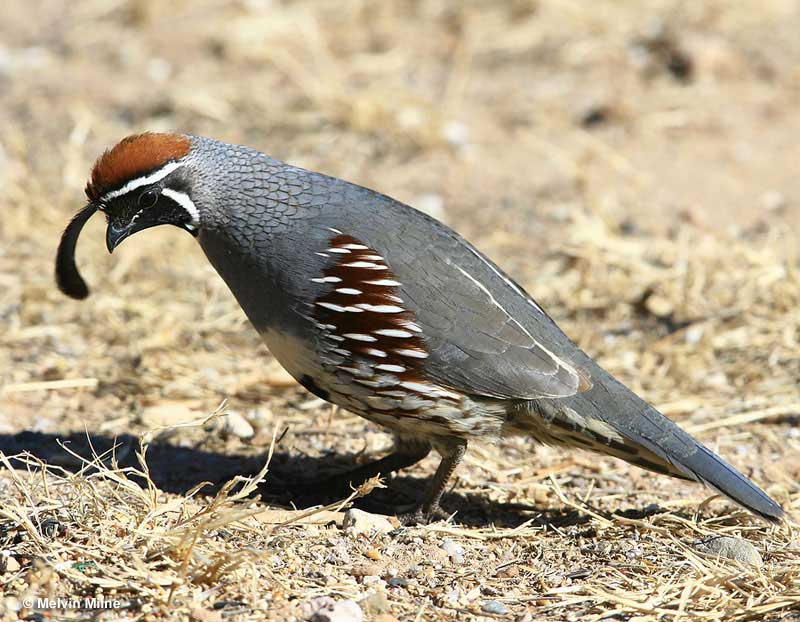
Gambel’s Quail
Male California Quails have a lighter reddish-brown crown and a scaled black and white belly.
Male Gambel’s Quail have buffy bellies and darker reddish-brown crowns.
Female Gambel’s Quails are not scaled like female California Quails are and are a plainer gray.
Gambel’s Quails have a range east of the California Quails range; there’s little overlap.
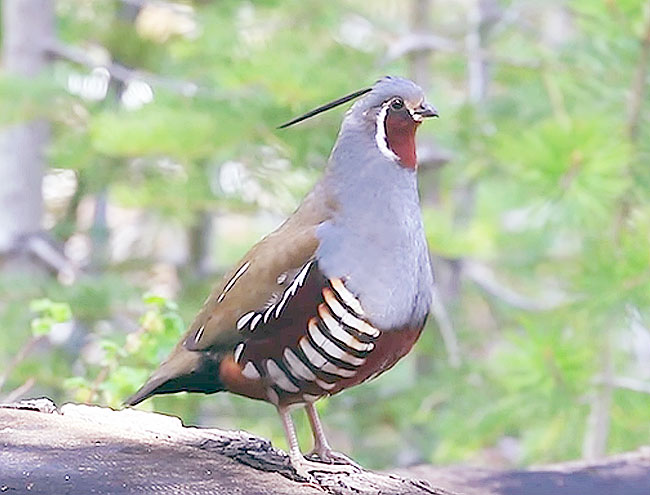
Mountain Quail
Both male and female Mountian Quails have bold, white vertical stripes on their sides, while California Quails have thinner horizontal stripes.
Additionally, they have a longer and thinner plume that comes off the top of their head. California Quails have curved, shorter head plumes.
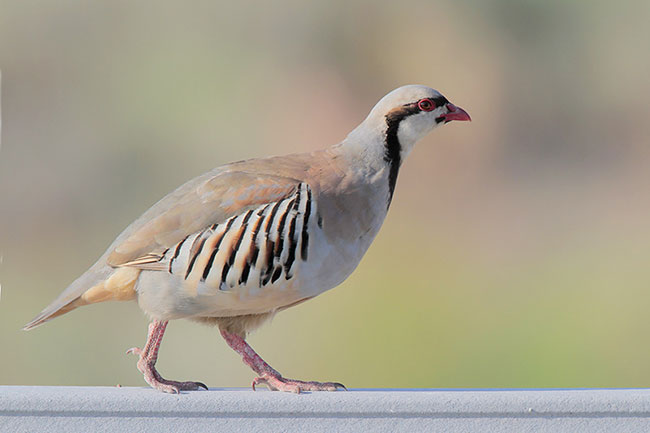
Chukar
California Quails have curved head plumes, while Chukars don’t have head plumes at all.
On top of that, Chukars have thick, bright red bills, are sandy brown overall.
They have bold black stripes.
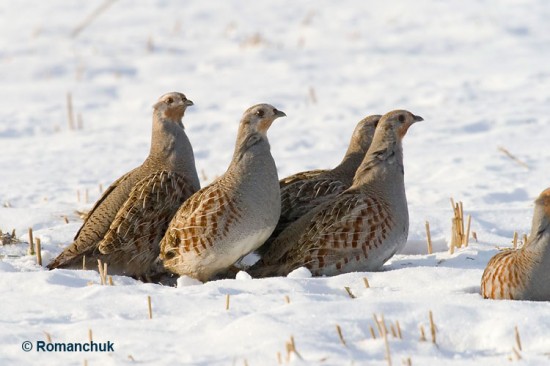
Gray Partridges
California Quails have white stripes and chestnut sides.
Male Gray Partridges have gray sides with reddish-brown barring and tawny faces.
Gray Partridges can even come to forage in gardens.
Frequently Asked Questions
What is special about the California Quail?
The California Quail has a unique head plume or topknot. This comma-shaped topknot looks like a single feather. However, it’s actually a cluster of six feathers that overlap.
What do California Quail do in the winter?
California Quail are permanent residents, but they move seasonally within their range.
Can California Quails be pets?
Yes, California Quails can be pets. They are relatively easy to care for, have quirky behavior, and have funny personalities!
Are California Quails invasive?
No, California Quails are not an invasive species.

